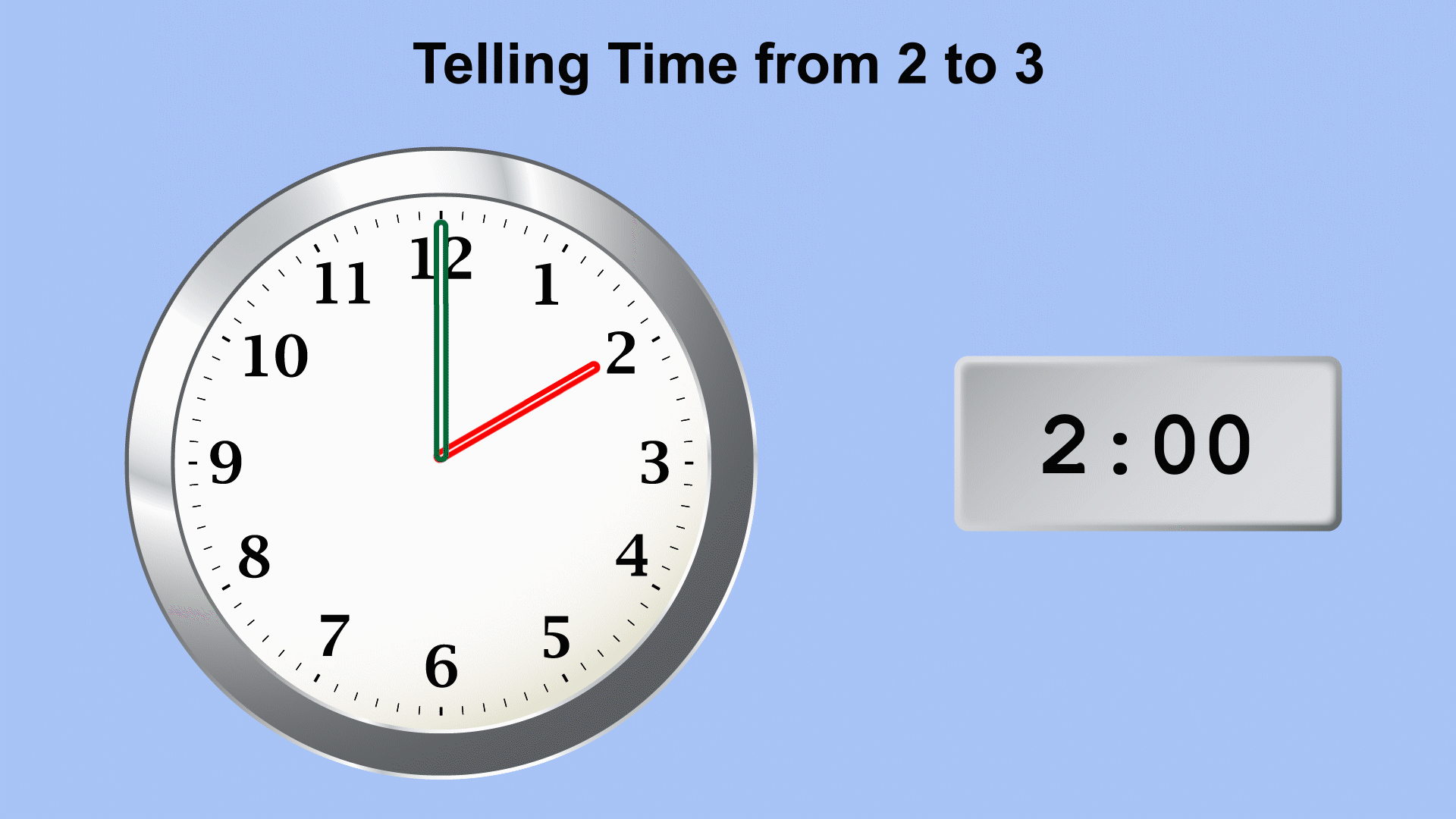
Display Title
Animated Math Clip Art--Clock Faces--From 2 to 3
Display Title
Animated Math Clip Art--Clock Faces--From 2 to 3

Topic
Telling Time
Description
This animated clip art depicting a clock from 2 to 3 enhances understanding of telling time. As it visually illustrates key moments, students can grasp the concept more intuitively. These images foster deeper engagement in math lessons, helping to break down complex ideas into manageable elements.
This collection of images serves as an effective teaching tool for conveying the concept of telling time. By using these animated visuals, educators can stimulate students’ interest and curiosity, making learning math more exciting and relatable.
The use of animated math clip art is essential in our digital age, where visual learning plays a crucial role in comprehension. Animated elements capture students' attention, provide dynamic representations of concepts, and cater to diverse learning styles—a crucial factor specifically in mathematics education.
Teachers can introduce the clocks as follows: "Class, let’s take a look at this clock that shows us the time from 2 to 3." This kind of language encourages active participation and invites students to share their thoughts on what they observe.
For a complete collection of animated math clip art related to Tell Time click on this link: Animated Clip Art: Telling Time Collection.
Telling Time
To review telling time, watch this video. (The transcript is also included.)
Video Transcript
When you look at a clock, you can read the hour and the minutes.
Here is a blank clock face.
Let's start by looking at the hour hand.
It is the shorter of the two clock hands and looks like this.
The hour hand varies in value from 1 to 12.
Here is a tour of times around the clock using the hour hand.
12 o'clock.
1 o'clock.
2 o'clock.
3 o'clock.
4 o'clock.
5 o'clock.
6 o'clock.
7 o'clock.
8 o'clock.
9 o'clock.
10 o'clock.
11 o'clock.
And back to 12 o'clock.
The minute hand is the longer of the two clock hands.
This is what it looks like.
The minute hand varies in value from 0 to 60.
Here is a tour of times around the clock in 5-minute increments.
5 minutes after the hour.
10 minutes after the hour.
15 minutes after the hour.
20 minutes after the hour.
25 minutes after the hour.
30 minutes after the hour.
35 minutes after the hour.
40 minutes after the hour.
45 minutes after the hour.
50 minutes after the hour.
55 minutes after the hour.
0 minutes after the hour.
Telling time involves reading both the hour and minute hand.
Here are some examples.
This is 12 o'clock. Both the hour and minute hands point to 12.
This is 12:15. The hour hand is a bit past 12 and the minute hand points to 3.
This is 12:30. The hour hand is between 12 and 1, and the minute hand points to 6.
This is 12:45. The hour hand is closer to 1 and the minute hand points to 9.
This is 1 o'clock. The hour hand points to 1 and the minute hand points to 12.
This pattern repeats for every hour and minute.
The Hour Hand
When you look at a clock, you can read the hour and the minutes. Here is a blank clock face.
Let’s start by looking at the hour hand. It is the shorter of the two clock hands and looks like this.
The hour hand varies in value from 1 to 12. Here are some sample times using the hour hand.
The Minute Hand
The minute hand is the longer of the two clock hands. This is what it looks like.
The minute hand varies in value from 0 to 60. Here are some sample times using the minute hand.
| Common Core Standards | CCSS.MATH.CONTENT.1.MD.B.3, CCSS.MATH.CONTENT.2.MD.C.7, CCSS.MATH.CONTENT.3.MD.A.1 |
|---|---|
| Grade Range | K - 2 |
| Curriculum Nodes |
Arithmetic • Measurement • Time |
| Copyright Year | 2022 |
| Keywords | clocks, time, time measurement, telling time |